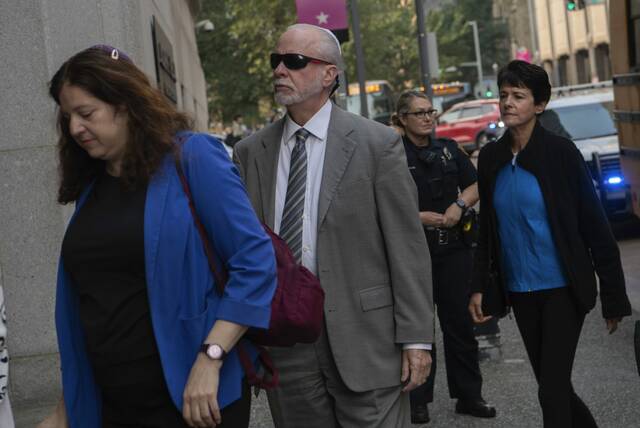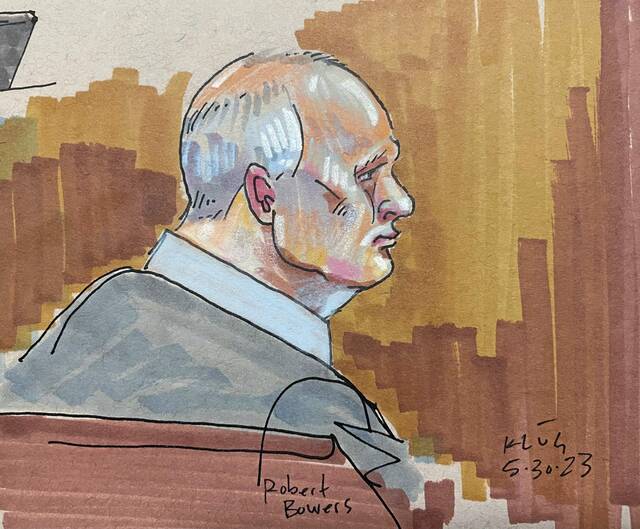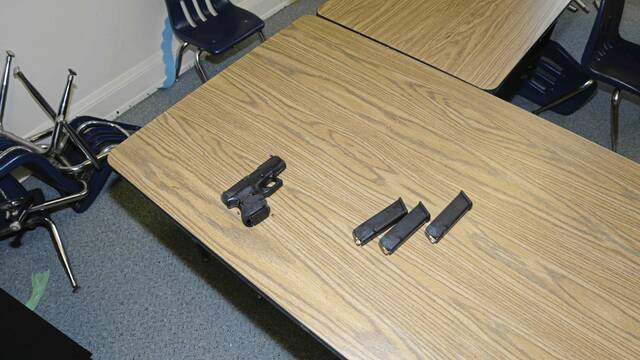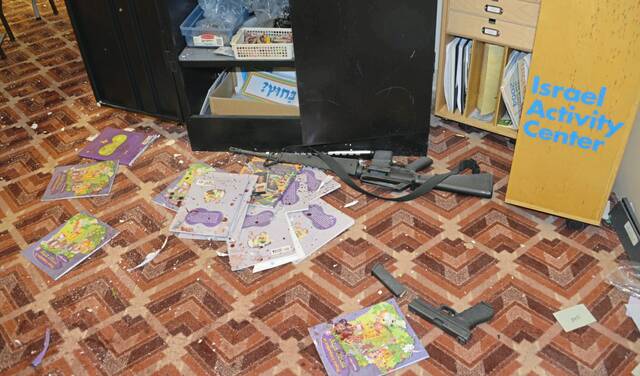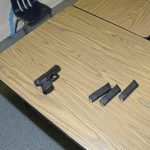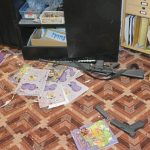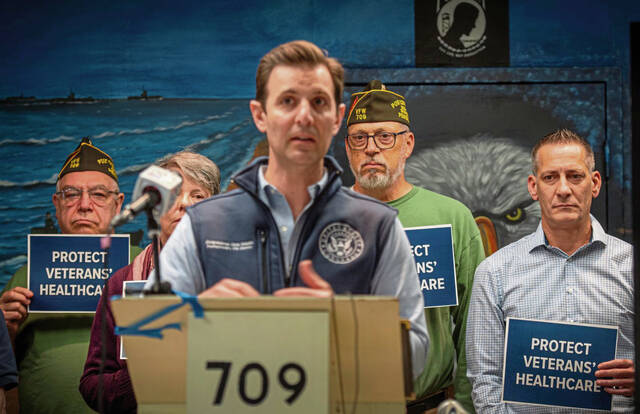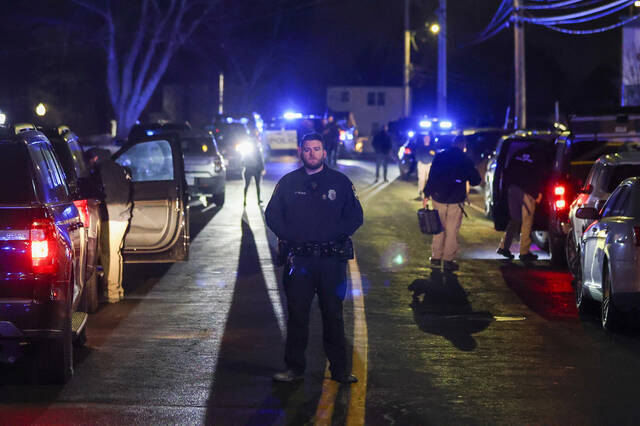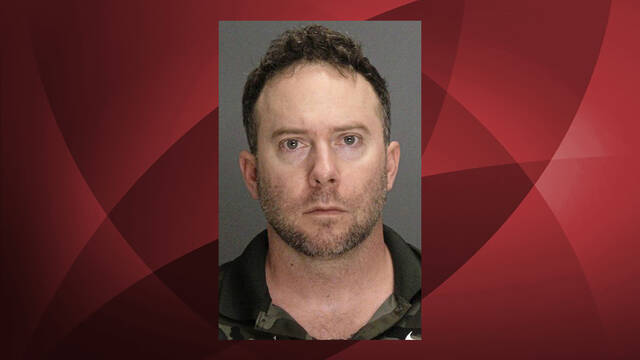As he was being treated at Allegheny General Hospital for gunshot wounds suffered in a firefight with Pittsburgh police at the Tree of Life synagogue, Robert Bowers was described as being “very polite, very cooperative.”
“He kind of was very nice and cordial with everybody,” Pittsburgh police Detective Robert Shaw said.
That description of Bowers is in stark contrast with his actions earlier Oct. 27, 2018. He admitted that he attacked the synagogue, killing 11 people worshipping inside, because of his vitriolic hatred of Jews.
On Wednesday, jurors heard testimony from several SWAT officers and a paramedic who interacted with Bowers on the morning of the attack after he surrendered.
Bowers, 50, of Baldwin faces 63 federal counts, including charges that he killed 11 people as they practiced their religious faith.
Those killed were Rose Mallinger, 97; Bernice Simon, 84, and her husband, Sylvan Simon, 86; brothers David Rosenthal, 54, and Cecil Rosenthal, 59; Dan Stein, 71; Irving Younger, 69; Dr. Jerry Rabinowitz, 66; Joyce Fienberg, 75; Melvin Wax, 87; and Richard Gottfried, 65.
The victims were members of the Tree of Life-Or L’Simcha, Dor Hadash and New Light congregations.
The government is seeking the death penalty against Bowers. The guilt phase of the trial, which began May 30, is expected to last three weeks, while the sentencing phase is expected to last six weeks.
So far, the prosecution has called 37 witnesses, including eight Wednesday.
Pittsburgh SWAT Officer Justin Lapaglia told the jury that he anticipated hearing cries or screams for help when he entered the synagogue the morning of Oct. 27, 2018.
Instead, all Lapaglia heard was the sound of rifle casings skittering across the floor as his team moved through the building.
“It was eerily quiet,” he said.
A SWAT team member since 2004, Lapaglia described coming across four deceased victims in the mezzanine area, his voice cracking as he said, “Three male, one female.”
He told the jury how he followed what he believed was the gunman’s path of travel through the synagogue, tracking the rifle casings on the floor, the bullet strikes in the ceiling and walls, and holes through the stainless-steel table in the kitchen outside the New Light sanctuary.
Lapaglia also described finding two survivors, Carol Black and Barry Werber, who had been hiding in a dark boiler room during the attack.
“I heard a woman’s voice inside that room,” he said. “She said, ‘We’re inside,’ and I told them to come out with their hands up.
“They were pale and unresponsive. They looked like they were in shock,” Lapaglia continued. “I was surprised they were able to follow my directions.”
Lapaglia also provided narration Wednesday when prosecutors played video taken from another officer’s body camera as SWAT team members cleared the rest of the synagogue after Bowers was taken into custody.
The video, played without sound, showed the officer moving through the rooms of the building looking for any other potential threats. As he moved, the bodies of the victims were visible.
Several other witnesses Wednesday talked about Bowers’ behavior as he was taken into custody.
Pittsburgh SWAT officer David Blahut, who heard Bowers talk about killing Jews, said he was one of the officers who helped cuff the suspect.
After Blahut radioed for medics to come to treat Bowers, who had been shot in the elbow, Bowers complained that the zip tie-style handcuffs used to secure his arms behind his back were too tight.
“I told him he would be treated humanely, and we had medics coming to take care of him,” Blahut said.
Bowers responded, “Good, these people are committing genocide on my people, and I just want to kill Jews.”
Blahut described Bowers as calm and lucid and using a normal tone of voice.
Pittsburgh SWAT paramedic Shawn Eigenbrode told the jury that he responded to the classroom where Bowers was moved for treatment that morning.
When he got in the room, the suspect was lying on the floor in the middle of a rug. His clothes had been removed to assess his injuries.
“He was awake, looking at us, pretty cooperative with any of our demands or questions,” Eigenbrode said.
He said he moved Bowers’ restraints from behind his back to in front of him and put the suspect’s pants back on his body.
Bowers also told medics that a procedure being performed on him hurt, “but not as much as being shot,” Eigenbrode testified.
Eigenbrode, who was on the witness stand for just 19 minutes, was one of four paramedics who carried Bowers down a fire escape to get him to the hospital. He said the process was “rather difficult.”
They carried him on a fabric stretcher down a narrow, steep fire escape, across a roof and down another flight of steps. During that difficult walk on the fire escape, medics leaned against the building for stability, and Bowers’ elbow, which sustained a gunshot wound, was dragged along the brick wall. An image showing the bloody trail was shown to the jury.
“I said, ‘Sorry, dude, I’m trying to stabilize us so we don’t fall,’ ” Eigenbrode testified.
While on the precarious fire escape, police wanted Bowers to answer a question: What was the small, green plastic clock (previously described as a “screaming meanie”) that they found in the hallway near where he had been captured?
Bowers called it a trucker’s alarm clock. A video of him being carried out of the building during which he answered the question was played for jurors.
“It was going to be a loud noise,” Bowers is heard saying in the video.
He told police the device was “a noisemaker, and he was going to try to distract us,” said Michael O’Keefe, a retired Allegheny County Police SWAT commander.
The alarm was set for 11:40 a.m., according to testimony.
O’Keefe also testified that he was in the hallway when Bowers crawled out of a room. He was asked why he gave up.
“He responded that he was shot and also that he had run out of ammunition for his AR-15,” O’Keefe said.
Earlier Wednesday, that Colt AR-15 rifle was one of five firearms — including three Glock handguns and a shotgun — Bowers had with him at the synagogue that were displayed to the jurors.
FBI Special Agent Samantha Bell paraded each weapon past the jury box, with their barrels pointing straight up toward the fifth-floor courtroom ceiling.
Bowers, sitting at the defense table, tracked each gun as it moved while several family members of the victims watched his reaction.
The weapons were displayed as part of testimony by retired FBI Special Agent Andrea Dammann, who led the evidence recovery and collection at the Squirrel Hill synagogue.
Dammann spent nearly three hours on the stand, describing the tedious, methodical process that she and a team of more than 60 others followed to document the large and complex crime scene that spanned from the basement of the sprawling building to its upper-most floors.
Pittsburgh police turned the crime scene over to Dammann and the FBI at 12:25 p.m. the day of the shooting, and they retained possession of it for nine full days — until 7 p.m. Nov. 5.
“It’s a very time-consuming process as you will see from the amount of time we spent working this scene,” she told jurors.
For those nine days, members of evidence response teams from FBI offices in Pittsburgh, Baltimore, Washington and Seattle photographed each room, each bullet and each piece of evidence multiple times.
They also diagrammed the synagogue by hand and via computer, completed laser scans and measured the building with survey equipment.
During the initial walk-through of the synagogue with police on the afternoon of the attack, Dammann, who retired after 30 years with the FBI, testified that she quickly understood the magnitude of the crime scene.
Citing building diagrams and photos throughout her testimony, Dammann said there were 62 spent rifle cartridges recovered from various rooms in the building, including 13 in Pervin Chapel, 16 in a mezzanine area, 13 in a mezzanine lobby and 10 in the basement where the New Life congregation worshiped and a nearby kitchen.
In the room where police and Bowers got into a firefight, Dammann said they found seven rifle casings and 17 from a handgun, along with spent bullets.
“There was a lot of evidence located in that room,” she said.
Jurors also were shown photos of the weapons and other evidence found in Bowers’ 2016 Hyundai Sonata parked in front of the synagogue.
Investigators found a crate of various chemicals in the trunk and a flashlight, protective glasses for shooting, ear protection and razors in the center console. They also recovered an ammunition pouch containing 21 loaded rifle magazines and shotgun shells, Dammann said.
Bowers’ wallet was found in the room where he was taken after his surrender. Dammann said it contained items identifying him, including a commercial driver’s license and a concealed-carry permit from the Allegheny County Sheriff’s Department.
Also testifying Wednesday was Mandy Tinkey, who oversaw the Allegheny County Medical Examiner’s Office mobile crime unit.
She identified each of the 11 people by name as crime scene photos were shown to jurors.
“The priority for our office on that day was identification of those victims and notifications to their families,” she testified.
She and five others worked through the night to prepare their bodies to be moved from the synagogue to the county morgue for autopsies.
They were moved in accordance with Jewish custom, she said, allowing someone to be with the bodies at all times and pray over them.


